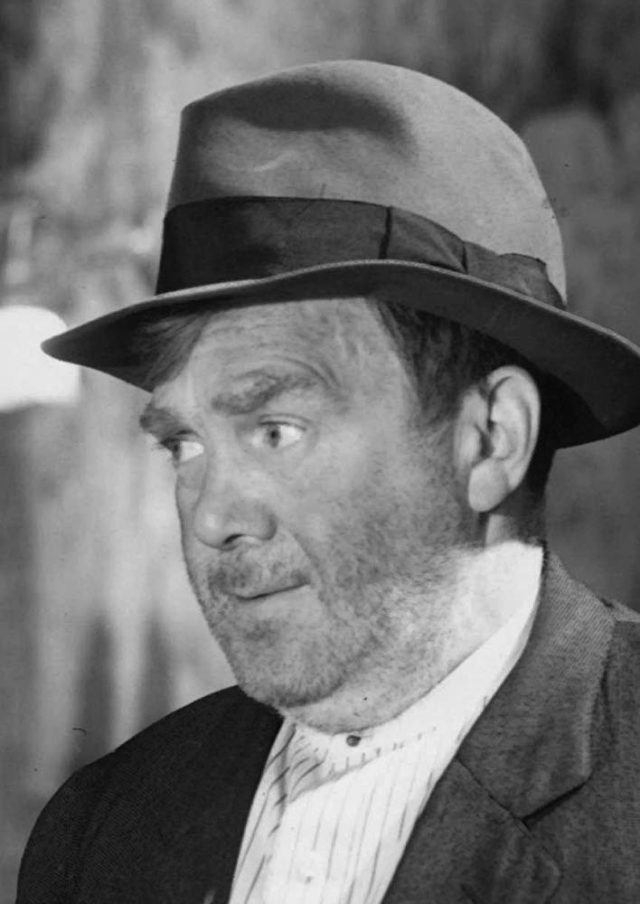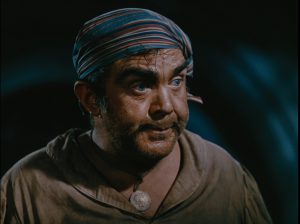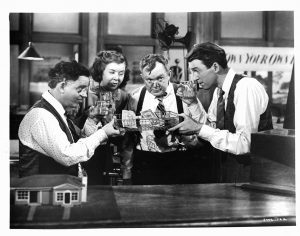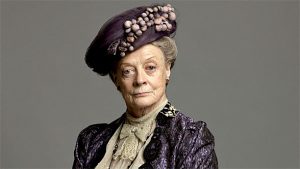From The IPKat:
On Christmas Eve, US actor Kevin Spacey puzzled the whole of Hollywood by producing what may the oddest Christmas video ever released on social media.
. . . .
Spacey, in releasing the video entitled “Let Me Be Frank” on his official YouTube account, appears ‘in character’ by invoking one of his most famous roles: Francis (aka Frank) Underwood from Netflix’s series House of Cards. In this three-minute clip, Kevin Spacey is shot wearing a Christmas apron, speaking to the camera (in the iconicHouse of Cards’s style), replete with Underwood’s usual mannerisms, tone of voice and (fake) Southern American accent. The irony is that in hitting south of 10 million views on YouTube, Spacey received more views than theHouse of Cards’s final season.
. . . .
The controversy of the video lies in the ambiguity of Spacey’s lines, which can only be understood with a little bit of context. In October 2018, Spacey suddenly became persona non-grata in the entertainment industry, following the publication in the press of allegations of sexual misconduct made against him.
. . . .
Netflix dropped the actor from its award-winning ‘House of Cards’ series.
In viewing the clip, one realizes that its title (“Let Me Be Frank”) is a pun referring to both the first name of the Netflix character as well as the actor’s ongoing legal disputes (the legal proceedings against Spacey are scheduled to begin this month in the United States and in England & Wales).
. . . .
Setting aside any controversy over the video, has Spacey infringed any intellectual property rights by going ‘off script’ and impersonating Frank Underwood without (it seems) Netflix’s blessing?
It is well-nigh impossible to imagine that any Spacey’s video is made of shots or off-cuts taken from the Netflix series (the image and editing quality simply is not there). To put it simply, “Let Me Be Frank” is home-made. The text and its embodiment by Spacey are also new material. So can there be no copyright infringement for literal copying of content produced by Netflix.
Still, the reference to Frank Underwood, and to the series House of Cards more generally, is undeniable [and presumably intentional]. So what about copyright infringement for non-literal copying? Let’s turn to what makes us think of ‘House of Cards’ or ‘Frank Underwood’ when we watch the video.
. . . .
- Spacey appears in the same hairstyle as that of Frank Underwood in the first seasons of the Netflix series (later, Spacey’s appearance is ‘aged’ thanks to make-up) [NOT PROTECTED SO NOT INFRINGED: hairstyles do not attract copyright protection when they are as basic as this one].
- Spacey speaks with the same accent, tone and pace as that of Frank Underwood throughout the series [NOT PROTECTED SO NOT INFRINGED: accents or styles of performance do not attract copyright protection in themselves].
- Spacey stares back at the camera and delivers his monologues speaking directly to the viewers, an iconic technique in the series that was frequently used in House of Cards [NOT PROTECTED SO NOT INFRINGED: A directing or performing technique cannot receive copyright protection in itself].
- Spacey’s lines convey the character’s typical ruthlessness and unapologetic sentiment towards past crimes or misbehaviour [NO PROTECTED SO NOT INFRINGED: the facts, ideas or feelings conveyed by words cannot attract copyright protection].
- The title “Let Me Be Frank”, as in Frank Underwood [NOT PROTECTED SO NOT INFRINGED: ‘Frank’ as a word is unlikely to attract copyright protection; further ‘Frank’ here could can be the adjective for ‘honest’].
- Spacey places a signet ring on his finger, recalling the ring with which the character was buried, which nevertheless manages to resurface mysteriously in the first season of the series [NOT PROTECTED SO NOT INFRINGED: the use of an ordinary object as a prop cannot in itself amount a type of expression protectable by copyright].
Taken individually, none of these elements that conjures up Frank Underwood in the viewer’s mind fits the definition of original expression protected by copyright.
But infringement for non-literal copying can also be assessed by taking various individual elements collectively to establish similarity between two creative works. Indeed, borrowing the “total concept and feel” of a work may influence a court in finding for copyright infringement
. . . .
In Roth Greeting Cards, the Court decided that the defendant had infringed the copyright covering the greeting cards of the claimant because “the characters depicted in the art work, the mood they portrayed, the combination of art work conveying a particular mood with a particular message, and the arrangement of the words on the greeting card”, were substantially similar (at 1110). Applying this to Spacey’s video, perhaps one could argue[though this Kat is not keen to do so] that Spacey’s video borrows too much of the “concept and feel” of Netflix’sHouse of Cards.
However, this Kat would counter by arguing that, except for the title, the similarities between the video and previous Netflix episodes all stem from the same source: Kevin Spacey (i.e. the actor’s performance). Spacey’s fake accent, delivery, and physical appearance are all elements of his performance that have contributed to building Frank Underwood’s character on screen and in the mind of viewers. These are elements that are unique to Kevin Spacey’s physical appearance and performing style.
These elements of performance were called the ‘embodiment’ of an actor’s performance in the “infamous” copyright decision Garcia v Google (766 F. 3d 929, 934 2014). Added to the script and director’s guidance, this ‘embodiment’ is what brought Frank Underwood to life in the series. Unfortunately for Netflix, in an en banc panel on appeal, the Ninth Circuit ruled that such an ‘embodiment’ is not subject to copyright protection, thereby overturning the 2014 judgment (see, Garcia v Google (786 F. 3d 733, 743-744, 2015)).
. . . .
However, there may be an alternative route for Netflix to claim infringement, namely that copyright exists in the character of ‘Frank Underwood’, which Spacey infringed by performing it without prior authorization. This only applies if Netflix owns the right in Frank Underwood’s character (as Kat readers may know, Netflix’s House of Cards is a US adaptation of an earlier BBC production, which is an adaption of a novel by Michael Dobbs).
The law on copyright in characters is still somewhat murky. In principle, characters are not granted protection, but some US courts have recently recognized certain exceptions according to which highly distinctive character, essential to the “story being told”, may be covered by copyright (See, Warner Bros. Pictures, Inc. v. Columbia Broad. Sys., 216 F.2d 945 (1954) 950 ). Indeed, recent cases in the US have leaned towards conferring protection to literary and pictorial characters alike (see for example, DCComics v Towle 802 F.3d 1012 (2015) 1020).
Link to the rest at The IPKat
As a preliminary matter, PG is generally aware of the nature of the allegations against Spacey. If true, Spacey may be in serious legal trouble. That said, accusations are not proof and more than a few accusations in a variety of matters have fallen apart when subjected to legal scrutiny.
Being administered by humans, the legal system of the United States is not perfect and does not always deliver perfect results. From his long-past experience with jury trials, PG’s personal experience is that juries are quite good at discerning truths amid conflicting accounts by witnesses, but sometimes they do make mistakes.
Judges are also human (occasionally in heavy disguise) and they similarly commit errors in determining how the law should be applied to particular cases and what actually happened when witness accounts conflict.
In various fictional accounts relating to the business of making films, a character will sometimes tell another character, “You’ll never work in this town again!” Although definitely not an expert on Hollywood business practices, PG thinks it likely that Spacey will have a great deal of difficulty working in the big-time movie business in its various manifestations.
With that wordy introduction, PG notes that Spacey is a prototypical character actor, albeit in a leading role in House of Cards.
A character actor typically plays unusual, interesting or eccentric characters who may be short or tall, heavy or thin, balding, older, or simply unconventional-looking and distinctive in some physical or behavioral way. Some character actors play substantially similar roles or characters in a wide variety of films or television shows.
Thomas Mitchell played similar roles in dozens of movies, an avuncular and slightly scruffy sidekick.
As Maggie Smith aged, she transitioned into proper and feisty English characters.
Back to the OP, PG can’t imagine a situation in which an actor who played a distinctive type of character would be prevented by copyright law from playing the same or similar type of character in an unrelated motion picture, play, etc.






Setting aside any controversy over the video, has Spacey infringed any intellectual property rights by going ‘off script’ and impersonating Frank Underwood without (it seems) Netflix’s blessing?
God Bless John Wayne.
Hmm, I’ve been wondering if Paramount/CBS might want to sue Fox over THE ORVILLE over the many similarities with STNG. Especially since a majority of long-time TREK fans agree that it is a better Trek than Trek (Star Trek Discovery, not so fondly referred to as STD).
Individually all the show elements are clearly derivative but somewhat different but the net effect…
A casual viewer of the promo trailer might see the show as a comedy/parody ala GALAXY QUEST but other than the pilot the rest of the series is dead serious especially the latter episodes. It would be hard to paint as parody most of the episodes.
Of course, a lawsuit might be an open admission of how poorly the franchise has been managed.
Just as there are only so many ways to do a western (with horses, hats, and guns it seems) there are only so many ways to have a space opera. Paramount/CBS might fear ‘losing’ such a battle – which might then open things up they’d prefer to keep locked down. (They know how shaky some of their rights grabs have been and they may fear Fox not backing down and their day in court going badly.)
Have watched the show?
The similarities aren’t just about a hero ship and it’s crew. Designs are different but the design language is very similar. Character concepts, actor make up, even actor voice and diction echoes STNG.
The biggest difference comes down to character honesty and informality.
Whether by intent or not, both shows lost their cute female security chief in the third episode of the second season. 🙂
There’s quite a few quality SF/Space Opera shows that bear little if any resemblance to Star Trek and STNG’s aesthetic.
Stargate, Lost in Space, the Expanse, Babylon 5, Battlestar Galactica, to name just a few.
Understand, I *like* the Orville. I even understand what they are doing with their irreverent characterization: Trek expects 25th century humans to be more “evolved”–ORVILLE snickers and says tomorrow’s humans will have all the foibles and bad habits of today’s.
It’s both fun and thought provoking in ways STNG AND DS9 were and that STD doesn’t even try to be.
I just wonder how much shade Paramoubt/CBS will tolerate.
Have not watched (haven’t watched TV for a few years now, hadn’t heard of anything that would make it worth putting up with the ads.)
I’ll take your word for how ‘too close’ it is, but that in turn makes you have to wonder why they haven’t lowered the boom – unless they’re actually afraid of upsetting what star trek fans they have left …
My thought.
When Seth MacFarlane writes better *drama* than your guys, you have a problem. Mind you, his scripts are really good on absolute terms, but a lawsuit would draw to much attention to their failings.
There are easily a dozen “too close to be coincidence” elements. They even scheduled the first season to run sundays, the same day the STD episodes released.
One element in particular is the voice of “Isaac.” Every time I hear him, I wonder if Orville is pulling a Darth Vader, where the body is played by one person (Mark Jackson) and the voice is played by Brent Spiner. Isaac sounds amazingly like Data, and that definitely can’t be spun as “just a coincidence.”
Agreed. That is no accident.
The relationship between Kelly and Ed, the single mother medical officer, the klingonish second officer, the bridge layout, the guns, the uniforms… Roddenberry cast his wife as the ship computer; MacFarlane cast his sister.
Each item is just different enough not to be blatant but the echoes are strong.
Some of it can be attributed to all the trek refugees on the production team but taken together, as the OP points out, it all looks suspicious. Given the pilot and trailer and the way hollywood tv schedules run, it is quite possible they started out to do a straight parody and evolved into pure SF adventure with a bit of whimsy.
For a change, FOX saw something they liked in the demographics because they moved it to a prime Thursday slot.
That better not happen. I enjoyed “The Orville’s” last episode, and I had hoped they were signaling that the Alara-centric episodes would have mysteries at the core, as with the evil clown episode.** At least the producers have promised that there may be more to last week’s ending than meets the eye.
I would offer myself as a character witness that “Orville” is more Trek than Discovery, but what I’ve heard about Discovery makes me avoid it. I’m too squeamish to see an old friend get turned into a skinsuit.
**It did remind me of a couple of episodes of ST:TNG, particularly the one where Beverly Crusher somehow ends up alone on the ship.
Thank you. Felix and Jamie, for reminding me – I need to get back to watching it.
Not sure about the Fox app, but Hulu has both seasons.
It’s not clear if the Alara character is gone for good, moved to recurring, or they’re pulling a Pulaski. 😉
But with the behind the scenes rumors odds are she won’t be returning as they’re getting another of her race as her “permanent” replacement.
One thing about The Orville: they do secure good guest stars. Liam Neeson, Charlize Theron, Patrick Warburton, and Trek veterans galore. Wouldn’t surprise me to see Shatner one of these days.
As for STD, the show has its problems (getting worse, as the plagiarism lawsuit was not dismissed and is going into discovery) but it’s not inherently awful. It’s just slow, dark, gritty, and more EXPANSE than Trek. It has some fans. Mostly new to the franchise, apparently.